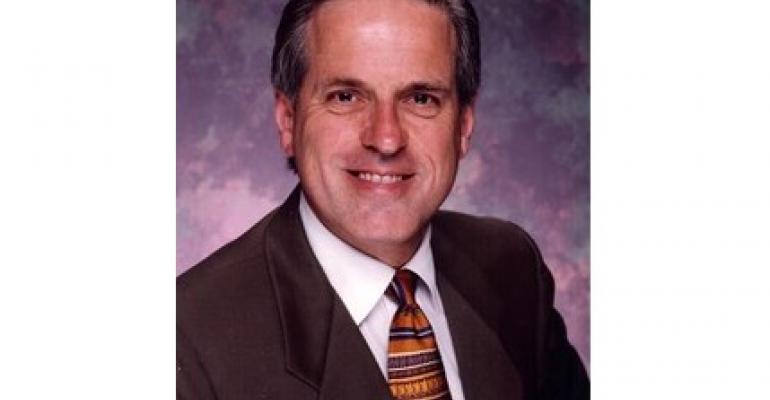'On the other side of horrible situations are great opportunities. One of the things that has moved this industry forward is innovation. Why shouldn't we use an innovative approach? Not just to get back in service but to show leadership,' said Nierenberg, a 45-year veteran senior cruise executive.
Masks, gloves, spray cleaners, banning buffets, closing public restrooms and social distancing are all things to do when the virus is active. But Nierenberg thinks shipboard air quality merits attention even if a vaccine is found.
Invest in permanent solutions
The cruise industry can learn from this pandemic and put solutions in place that will also combat future pathogens, he said, noting that every five to 10 years, new strains emerge as threats. Before COVID-19, SARS, H1N1 and MERS all impacted travel.
Now is the time to invest in permanent improvements for the day-in, day-out health of guests and crew.
Photocatalytic oxidation
Nierenberg's research uncovered solutions that address not just COVID-19 but other airborne pathogens and air quality issues. He said his purpose in speaking out is not to tout specific technologies but to raise awareness of concepts like photocatalytic oxidation (PCO) that kills 99.9% of pathogens, including viruses and bacteria, by continuously purifying the air and surfaces people touch.
Here's how PCO works with HVAC systems: Ultraviolet light shines onto a catalyst, typically titanium dioxide, creating electrons that interact with water molecules in the air, forming powerful hydroxyl radicals. These react with pollutant molecules, breaking apart their chemical bonds and rendering them into harmless carbon dioxide and water molecules.
Besides bacteria and viruses, PCO attacks mold spores and volatile organic compounds that are the source of many odors and can irritate eyes, nose and throat and cause headache, fatigue, dizziness or more serious health issues. According to Nierenberg, studies have shown the use of PCO in office buildings sharply reduced employee sick days.
InspiredTEC
'Some products are more thorough than others but, in the end, the best products do an incredible, reliable job in making the air pathogen-free. This is done 24/7,' Nierenberg said. He's personally endorsing InspiredTEC's PCO solution.
Nierenberg said harnessing PCO on ships would improve the work environment for crew, benefit older travelers with respiratory issues and anyone with asthma and allergies. Improved sleep quality is an added bonus.
The devices are installed near HVAC blowers, or in individual rooms on those ships whose cabins have independent systems. He thinks a 2,000-passenger ship would require 175 to 200 devices at a total cost of approximately $200,000. PCO technology can also be installed in food preparation areas and inside ice machines.
Cruise terminals
Another application is in cruise terminals, where passengers will be spending more time in future since health screening at check-in is going to take longer. (Nierenberg teamed with Luis Ajamil to create 'A Blueprint for a Healthy Cruise Industry,' advocating a holistic public health approach involving ports and destinations.)
For outdoor applications like pool deck furniture, awnings, lighting fixtures and windows, Nierenberg likes Pureti's photocatalytic surface treatments. The product is sprayed on, forming an invisible film that is durably bonded to treated surfaces.
Laundry
Apart from air quality, Nierenberg has singled out other advances he thinks would lead to healthier cruising. When it comes to laundry, for example, he favors Cleaner Solutions, whose eco-friendly products eliminate caustic chemicals while extending textile life, saving money.
Taking all these things into account, 'Wherever the guests and crew walk, eat, recreate and spend time in cabins and public spaces, they will be in a clean and pathogen-free environment,' he said.
Health screening
Concerning health screening and monitoring, Nierenberg likes Capscann's solution. Passengers and crew would download an app to enter their basic health history and temperature pre-departure. At embarkation, and whenever people enter or exit the ship, their temperature would be checked by a touch-free reader. Further readers would be placed around the vessel.
The app assigns a unique code to each person and automatically records their temperature whenever it is taken. Should there be a spike, medical personnel would be alerted. Individual records are safely stored in the cloud and automatically erased after 60 days.
'I'd like to be a catalyst to show the [Centers for Disease Control and Prevention] these are the types of things we're working on to go above and beyond what's required,' Nierenberg said. Bold actions are needed to assure public health authorities and restore the public's confidence in cruising.
'If I know the cruise lines are going to purify the air, laundry, chairs by the pool and the crew quarters,' that's a powerful statement, he said. The industry should stand out by offering the safest travel experience.
And all of this would go a long way, Nierenberg added, toward ending the narrative of cruise ships as a 'petri dish' for disease.
Bruce Nierenberg can be reached at [email protected].
Copyright © 2024. All rights reserved. Seatrade, a trading name of Informa Markets (UK) Limited.
Add Seatrade Cruise News to your Google News feed.  |

